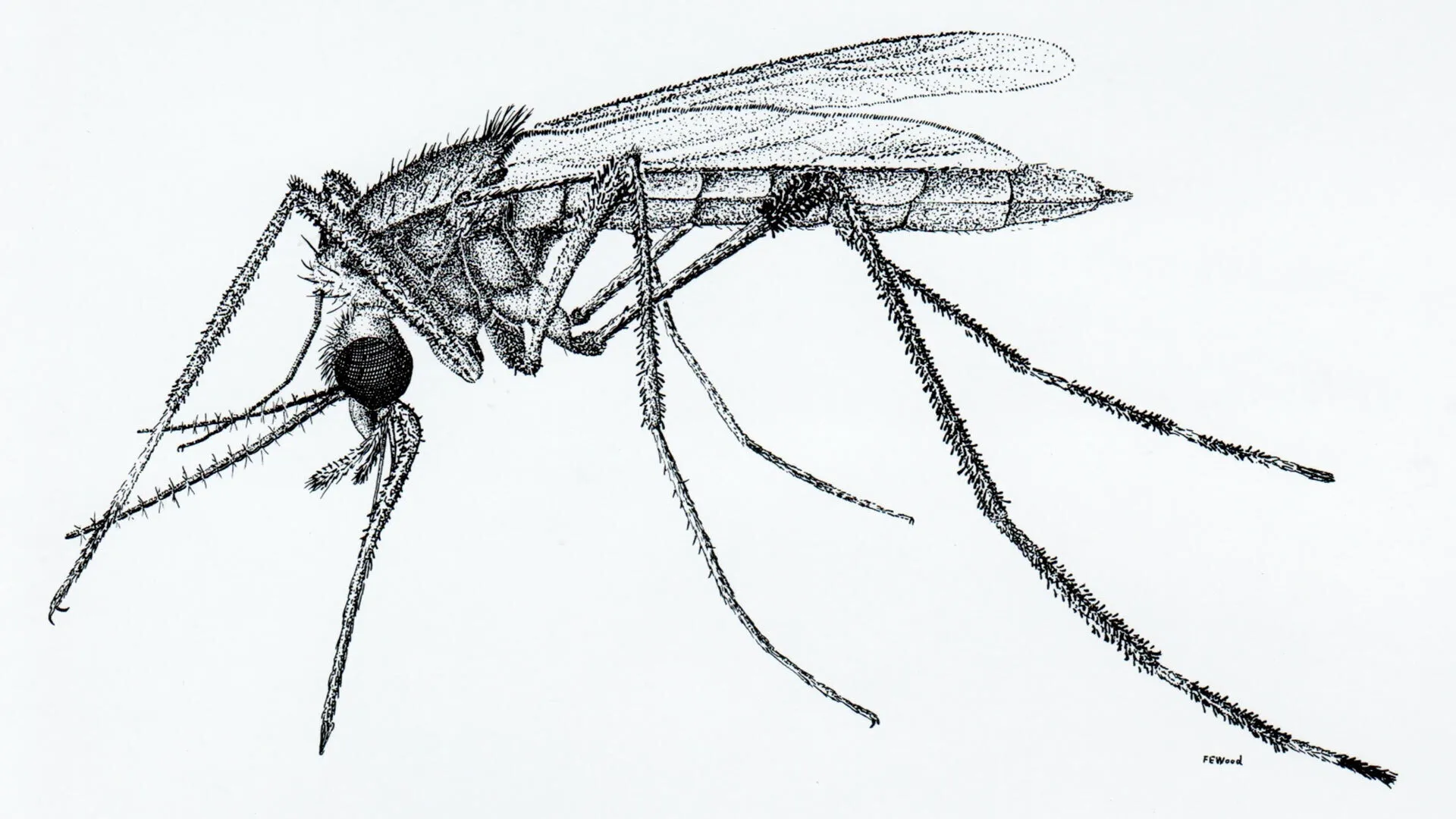- September 18, 2023
- By Maggie Haslam
With its hairy legs and long, looped antennae, a female black cockroach could easily play a starring role in your nightmares. But in the hands of late entomology Professor Francis Eugene “Gene” Wood, who lovingly captured the common household pest with pen and ink in the 1960s, it skitters from scary to stunning.
Wood’s drawing joins hundreds of insect illustrations—like the beautiful (and endangered) Baltimore checkerspot butterfly and the monstrous wolf spider—as part of an online catalog created by the University of Maryland’s Department of Entomology. Spearheaded by his longtime friend and colleague Professor Emeritus John Davidson, the website features hundreds of meticulous drawings by Wood and department faculty, students and colleagues over a more than 50-year period. The collection of high-resolution images, which cover the gamut of household and landscape insects common to Maryland, is free for the public to explore.
Wood, an urban entomologist specializing in cockroaches, and Davidson, who studied landscape entomology, began illustrating insects in the 1960s as part of community outreach for the University of Maryland Extension. The drawings were used as teaching and training tools for students, farmers, government agencies and the general public in an analog era.
“Back in the day, we didn’t really have the ability to do it any other way,” said Davidson. “And we really liked to draw, so we both just leaned into it.”
While educational by design, each illustration is also a small work of art: mantises, grasshoppers, aphids and earwigs are beautifully detailed in swashes of colored pencil and intricately detailed India ink. Over the decades, the department amassed hundreds of illustrations; before Wood died in 2013, Davidson vowed to find a permanent home for them. Now, the website serves as a resource for nonprofit uses and education.
“It was a way to honor my friend and these beautiful illustrations of ticks and cockroaches, which were his specialty,” said Davidson. “I’m quite proud of that.”

When it comes to insect taxonomy, said Davidson, determining a species can come down to the smallest detail, like the number of hairs on a leg. For that, old-fashioned is better. “There is a little more detail in a drawing, although the pictures today are really good,” he said.

In addition to Wood and Davidson, images available on the website were created by colleagues Professor Emeritus Michael J. Raupp, Elaine Hodges, Arthur Cushman and a number of students. Before they switched to technical pens, the artists used India Ink and a crow quill pen, later integrating colored pencil. Above, an illustration of a cactus bee by Elaine Hodges.

At just a little over 1 mm, the armored scale parasitic wasp drills into scale insects—a common detriment to trees—and lay their eggs, which hatch and feast on the scale insect. “It’s a beneficial insect, so it’s one of my favorites, because it’s a great alternative to pesticide,” said Davidson.

Drawings from Wood, Davidson, colleagues and students are used in training materials for advanced landscape Integrated Pest Management courses and in various publications; a large collection was published by the American Tree Care Association in 2014.

The cockroach was a specialty for Wood, who worked with the city of Baltimore in the 1960s to help eradicate infestations in public housing and reduce the use of pesticides.
